Pillars of Speed, Part 4: Aerodynamics
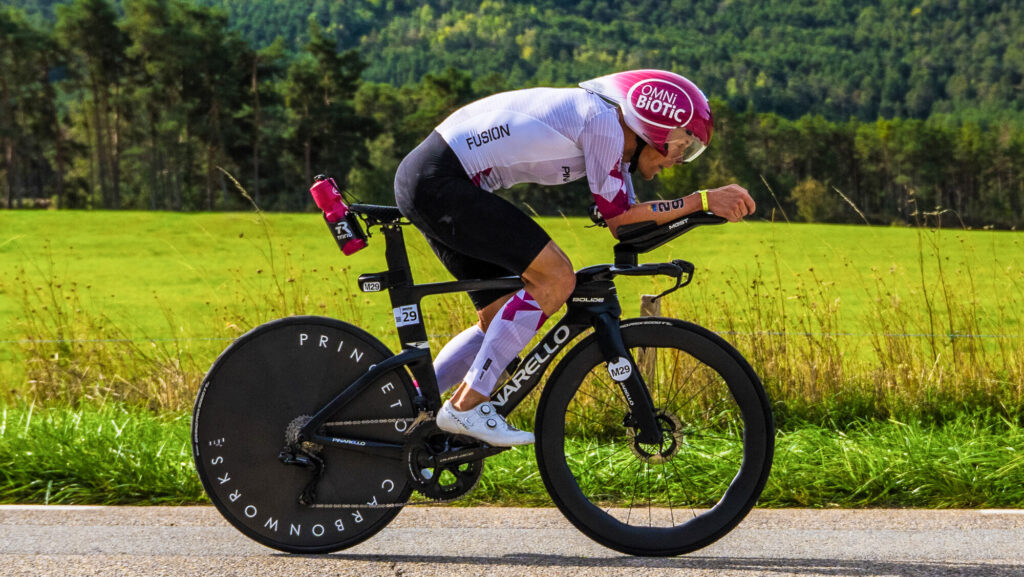
This is part four of the Pillars of Speed series. You can find the prior installments here:
Aerodynamics
Optimization of frontal surface area and shape to reduce aerodynamic drag.
Reducing aerodynamic drag is the final goal of the fit. I’ve spent hours testing athletes in wind tunnels and velodromes. Making major changes to rider positions to chase a lower drag number requires a delicate balance. I carefully assess the trade-offs, knowing their positions are already optimized for comfort within their biomechanical profile. Before doing something drastic, I ask myself, Can the athlete adapt to this change?
Often, the safe changes or optimization rely on small tweaks of the head and arm position, elbow width, or hand height, which can yield significant aerodynamic gains without compromising comfort or power. Additional factors, such as helmet selection, clothing, and bottle placement, also play critical roles.
Lets look at a real world example that we saw take place with two of the best triathletes in the world at last year’s Ironman World Championships. Kristian Blummenfelt and Gustav Iden showed up to Kona in what could be called “Superman” positions. I view the Norwegian team as a “leave no stone unturned” one. The positions were clearly aero driven and they took the risk hoping to give themselves an advantage over the field.
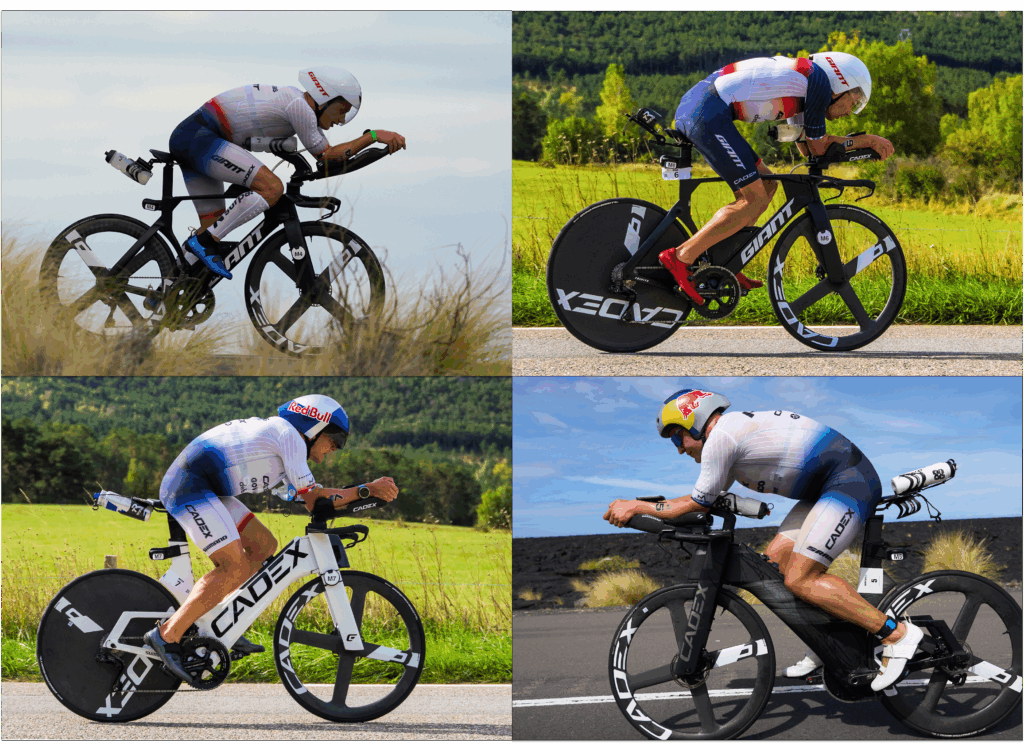
The positions were short lived and the departure from them is proof that they didn’t check all the boxes of the speed equation: comfort + power + aero. These positions leaned too heavily towards the aero portion of the equation, showing that sometimes the most aero position isn’t the best position for long distance triathlon. They made this change pretty close to the race and perhaps, given more time to adapt, we might see a similar version of this positions again in the future?
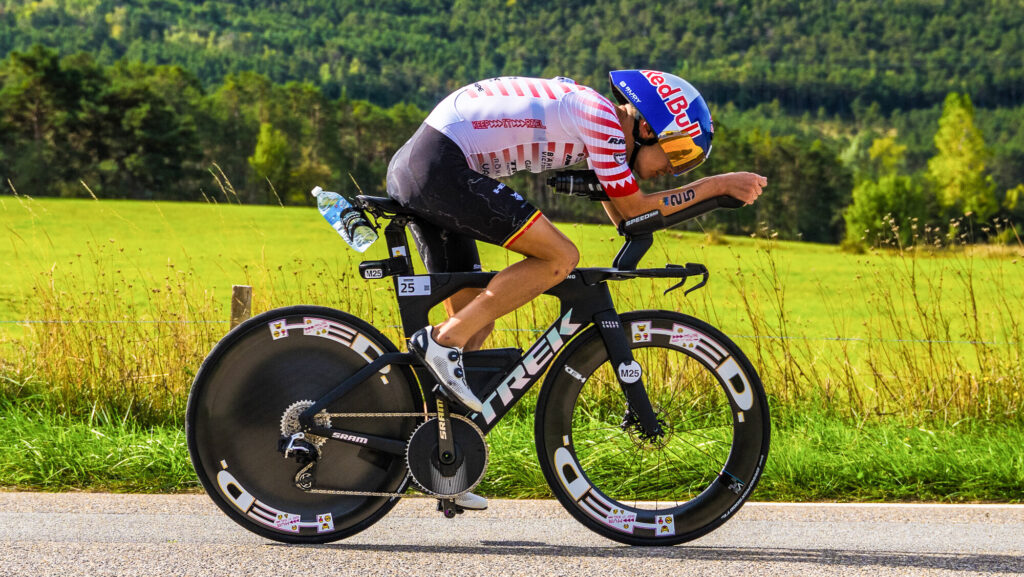
As you grow comfortable in your position, how can you can begin to tinker to find additional aerodynamic gains? A position that wasn’t viable a year ago may now be worth a shot because you’ve adapted to the previous setup and are very comfortable and in control in the position. You perhaps can go through the same process again by taking on a more aerodynamic position and allowing your body to adapt. This is why it might seem like athletes are constantly getting bike fits. What they are really doing is trying to find improvements and giving the body a chance to adapt to them. Sometimes they do and other times they’ve found their limits.
How to Get More Aero?
So what makes a more aerodynamic position? The goal is to minimize frontal surface area and streamline your shape to reduce drag. There are many ways to do this, but to validate that a change is actually faster, you’ll want some form of testing or feedback. When this is not an option, you’ll need to at lest make sure your position is comfortable and that you can produce power. From there, you’ll need to just rely on the basics of what traditionally are best aerodynamic practices.
When it comes to your position, the first order of business is lowering your front end to reduce your back angle. Sitting up and exposing your head and chest to the wind is not going to enhance your speed. Another popular option is to lengthen the front end to increase the rider’s reach, stretching out onto the front end. That can also lower your back angle and change the upper-arm angle, theoretically presenting a smaller “cylinder” to the wind. Narrowing of the elbows in another way to minimize frontal surface area.
These are just some basics that are “traditionally” aerodynamic best practices, but the way the wind flows around the body can be a mysterious thing.
Posture
Posture on the bike is where I’ve normally seen the biggest gains. When I’m working with an athlete and they come into the fit studio and have poor bike posture. I can often guide them towards postural improvements that are so drastic that when I show them a video of before and after the position looks dramatically different, yet I made zero changes to the contact points on their bike.
This is the biggest change that I’ve seen in bike fitting over the years. When I mentioned lowering the bars to reduce the back angle, it used to be that you’d lower them as far as the athlete could tolerate without closing down the hip angle. Now, we still want to lower the bars, but do so in a way where the rider can relax into the position vs reaching for their drop.
Here are some tips on how to have good posture on the bike. First, place your elbows on the pads (you can have the point of your elbow off the back of the pad, but I prefer there to be little to no overhang), relaxed neutral wrist and hands with thumbs over the top of shifters (no death grip), and the just relax on the front end in that position…it should feel almost lazy. Your head and spine should be in the neutral position looking at your front tire. From there, just lift your chin, not your head. The opposite of what I just described is what I call a periscope head. Periscope head is what it sounds like. It’s where the rider lifts their entire head and face up into the wind. It’s not only uncomfortable for the neck, it also exposes a big bowling ball shape to the wind. This is also a symptom of when an athletes front end is too low and they are reaching for their drop vs comfortably falling into their position.
In the neutral head/spine position you can still see down the road…I am not advocating for riders to keep their heads down where they cannot see. I encourage riders to float between some periscope head to look way down the road while spending the majority of time in the neutral position. With time and adaptation, you’ll be able to avoid periscope head all together as you become better at lifting your chin to see further down the road.
Another postural technique is the shrug. The shrug narrows and morphs the shape of your upper back and shoulders. It’s not natural and takes practice to hold. Athletes typically won’t be able to maintain a hard shrug the entire race, but will use it as a tool when speeds are high or when an athlete is trying to attack. To perform a shrug, you essentially bring your shoulders toward your ears. You can just stand up and do this. When shrugging in the aero position, some athletes bring their shoulders forward while others can stay more stretched out. An example here would be to look at Gustav Iden, who tends to keep a tighter position, whereas Magnus Ditlev maintains a stretched out position.
Equipment
The other lever for reducing resistive forces is equipment: aero helmets, skinsuits, fast tires, aero wheels, ceramic bearings, and smart bottle setups. All of these can make you faster without an increase in fitness.
What’s “the fastest?” Many companies are making excellent products. In most categories there are several brands where it’s hard to go wrong.
Discussion
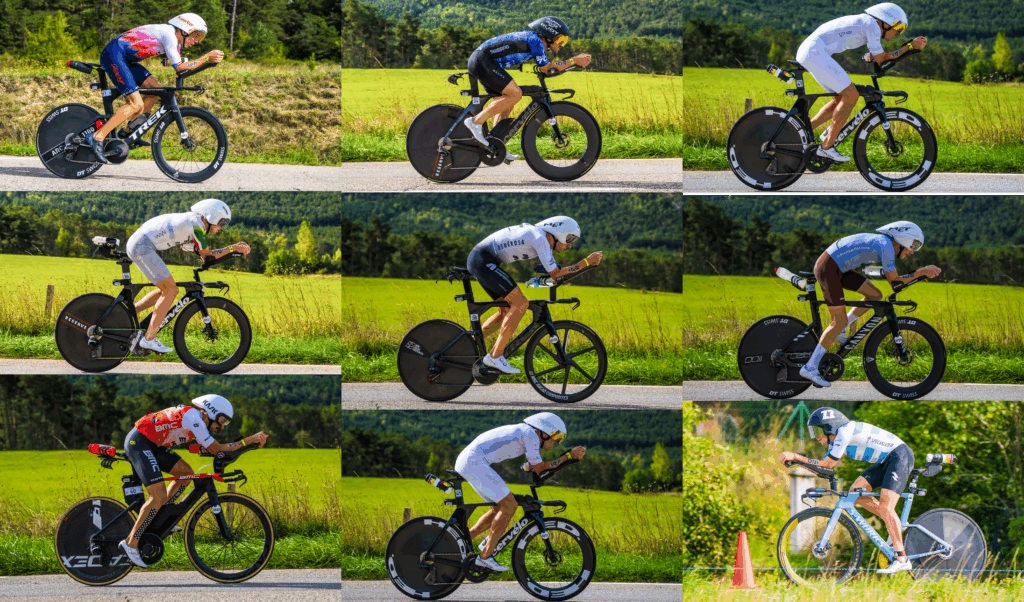
I have a theory I want to explore in 2026: I have a hunch that these taller, longer positions are not as aerodynamic as athletes riding lower positions. They might be extra comfortable and produce great power, but some of the setups don’t pass the sniff test for me. I’d love those that have done more testing recently than I have to give their opinions on this because I’ve not had the chance to test them myself.
I believe it’s the case where you’ve had some athletes put in the time to find a position that checks all the boxes and others just followed suit. And, when folks do get the chance to test, are they just testing variants of the same theme from a position standpoint? I could very likely be mistaken, but I find it hard to believe that the positions from the images above are the fastest options for these athletes.
The taller positions do allow athletes to have nice head positions, but I believe this can also be done with a lower position as you see from Rudy Von Berg below.
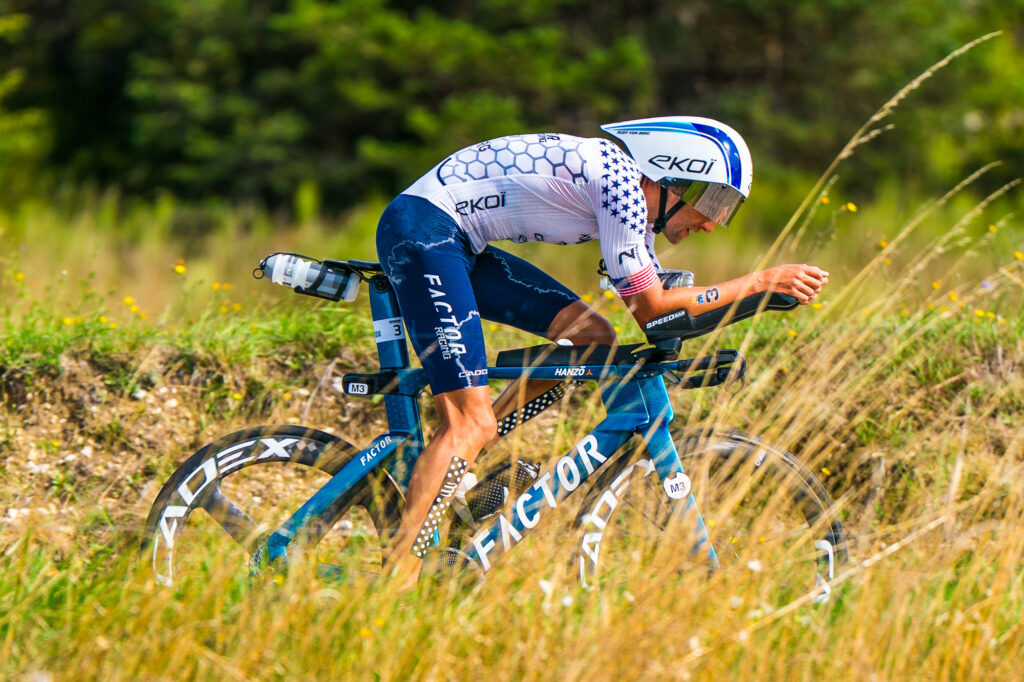
Several pro athletes who have adopted a more relaxed position have texted me after races: they’re putting out plenty of power yet still getting dropped by the front group or failing to bridge as they have in the past. With advances in technology, athletes are riding really well these days, but I don’t think the relaxed positions are contributing as much, especially if athletes haven’t tested alternatives.
When I look at pro-tour riders, I believe triathletes are capable of these positions and they are more aerodynamic. I don’t see time trialist raising their front ends riding and riding in relaxed positions. In fact, some of the best time trialers have tightened their front ends. Yes, UCI rules limit what they can do, but there’s still some flexibility (Pogačar rode a longer position in 2024 and brought his bars in for 2025). Obviously, Remco doesn’t have to get off the bike and run, but having worked with many pro-tour riders, the same speed equation applies: comfort + power + aero. Pro-tour riders still complain about comfort, but they find positions they can “tolerate” for the duration of the event.
I’ll concede these newer relaxed positions might be more robust for a lot of triathletes, but if you’re focused on aerodynamics, I think we’ll see athletes gravitate back to more steam-lined positions, checking the comfort + power box, and still being able to run their best off the bike.
Summary
Start with a proper fit from an experienced fitter. Once you have a solid baseline, it’s easier to make incremental aerodynamic changes over time as we adapt to each progressive change. We all have our quirks, but orthodox time-trial positions are achievable for most triathletes.




This was a great article.
Do you plan to do one for the ladies ?
Chiming in because Matt invited me to do so. I know I’m not here much anymore, but that’s just because I enjoy being retired and putting out a YouTube video every now and then is about all I can muster.
There are only two ways to get more aero. In terms of CdA, you can either improve Cd, which is how efficiently air flows over and around you, or you can lower A, the frontal area you present to the wind. That’s it.
Re: Positioning. Certainly there’s been many athletes adding significant Reach to their positions over the last few years. That’s because, when done properly, it works very well not just to lower drag, but increase comfort. Right up until it doesn’t. Like all good things, there is such a thing as too much. How much is too much is athlete dependent.
The reason adding Reach works so well is it both improves Cd and lowers A. When combined with the proper forearm angle, it narrows you (forearm angle isn’t necessary for narrowing, but it is for comfort) and naturally lowers you head, getting it out of the wind without having to “shrug” or “turtle” (or whatever you want to call it). I’m against anything that wastes energy or compromises comfort, and forcing your head lower does both. It should happen without you really trying if you get your position correct. Of course, getting your head lower also allows your aero helmet sit on you properly helping it to do it’s job, which is to improve Cd (remember, these helmets add significant Area, more and more all the time, so they have to overcome that and then some to actually make you faster).
Too much Reach, though, and you’ll lose skeletal support of your upper body, and that’s not going to help you in the long run. The trade off isn’t worth it. This is why you should be testing outdoors. In a tunnel, you spend only a few minutes at most testing a position, and even then not at anywhere near race effort, only to find out that once you’re actually riding your bike, the position doesn’t work for you. I’ve made a lot of money over the years from athletes who’ve come out of the tunnel with unrealistic positions. Tunnels have their use, but for positioning you’re better off testing real world.
I agree with Matt that these higher back angle positions are probably not as efficient as athletes have been led to believe. Athletes reach out to me all the time not understanding why their peers so easily pull away from them on the bike when they know their power numbers are similar. It’s not brain surgery…they’re more efficient.
From what I’ve been seeing, if you want to see the best positions in triathlon, look to the pointy end of the men’s age group fields, not the pros. These guys are putting in a lot of time and effort (and money) optimizing everything they can going to people like Matt, and it shows. I would take the top 10 age groupers in the world and put their CdA’s up against the pros any day. Women are getting better, but still lagging behind, especially in the age group ranks. Even our Fast or Fiction YouTube videos show our audience is 100% male, which I realize isn’t accurate, but I bet it’s over 95%. Most women aren’t yet convinced it actually matters.
Thanks Marc. I know you’ve done a lot of testing. Have you found that elevated back angles are more aero all the sudden? I understand the I understand that this is triathlon and not bike racing…athletes need to be able to take in CHO and run well.
I will most likely write an article on the female positions if @E_DUB and crew can get me some good photos:)
This seems to be a step back from last years Kona’s bike position article.
Thanks for taking the time to reply Jim. That is a great point about looking at the best age group positions. I’m not sure how @E_DUB and crew could pull that off logistically but I’d love to see images of the top age group positions.
I was wondering if athletes have found a way to improve Cd by such a margin that they don’t have to worry as much about frontal area? I know triathlon is not a bike race, but if Cd was so much better, I would think you’d see pro tour riders not worrying as much about frontal area.
I believe you’re going to see some of these ultra comfy looking positions come back down. Not to the point where you stop being able to produce power, but at some point you’re going to be at your limit when it comes to output. The only way to get faster on the bike is via a lower CdA. As you can see from the bike reviews that are being posted this week. You’re not seeing a lot of head scratching equipment choices. Position is how I believe you can improve on the bike.
In what way? As in what I like and don’t like?
More like the pendulum is swinging back a bit from tall and long is king and maybe some low is faster overall
Although:
2024: “it’s exciting to consider where we go from here. From a bike fit perspective, these modern positions appear to not only be faster, but also significantly more comfortable.”
2025: “I have a theory I want to explore in 2026: I have a hunch that these taller, longer positions are not as aerodynamic as athletes riding lower positions. They might be extra comfortable and produce great power, but some of the setups don’t pass the sniff test for me.”
I see what you mean.
A few points:
• I think we are seeing a bit of…if a little bit is good, more is better. You mention pendulum and that makes sense. I’ve seen periods of how low can you go, how long can you go, how much bar angulation (in both directions) can you ride.
• I’ve had some more time to think about positions since last year. As I mentioned in the article, some of these positions don’t pass the eyeball aero test. I want to keep an open mind and if these positions are indeed faster because they are managing to improve the aero shape by so much that they can increase surface area and still be faster. I hope that is the case because the positions sure look comfy.
A couple of weeks ago, a WT rider went to Silversone
They did
current stack, -2cm, -4cm, -6m (going lower)
current reach, +1cm, +2cm +4cm (extended reach)
current incline, +5 deg, +10deg
they measured at 0 to 15deg yaw and took weighted average
Fastest was -4cm stack, +2cm reach, current incline so never at the extreme
They could have done better with a little imagination but it gave plenty of ideas for future optimizations
This is the whole lower pressure and hookless wheels argument in a nutshell.
Great article and like as well how the comments discuss Cd vs A. As a taller rider with poor flexibility, I was wondering if going taller in the stack might help me by reducing Cd perhaps naively thinking getting my forearms in the path of the chest might help Cd. I haven’t tried yet and still am working to go down. My educated guess is that I am at CdA ~ 0.32 on a Madone with aero bars.
Great article @MatSteinmetz and I think its all great food for thought.
I would add two parts:
To get to the absolutely best position is a journey measured in years. The bike is a technical discipline just like the swim. A swim coach can do video capture and explain to you how ideal swim for would look like, but nobody expects that they can then immediately execute the new form after a 2-3 hours session. Yet that’s what we often expect of bike fitters. As you perfectly stated in your article, the biggest gains come from posture changes, not changes to fit coordinates. But this is something the athlete needs to learn, remember, and build up the musculature and range of motion to support. I believe the future of bike fit is more like position coaching: An ongoing relationship with regular check ins, supporting exercise and dedicated posture training as a focus on the bike.
I recently did a correlation study on 1121 postures in my dataset comparing CdA with frontal area. As you expect they are highly correlated, but not enough to make any useful fit decision from frontal area alone: For a given frontal area, CdA varied by 25%!
I also looked at hip angle vs CdA but havent done a formal study on the whole dataset. In the aero-fit class I teach as part of AiRO I have a slide that says “Lower is typically faster BUT too low is always worse”. Both in power production, but also head position, ability to shrug etc.